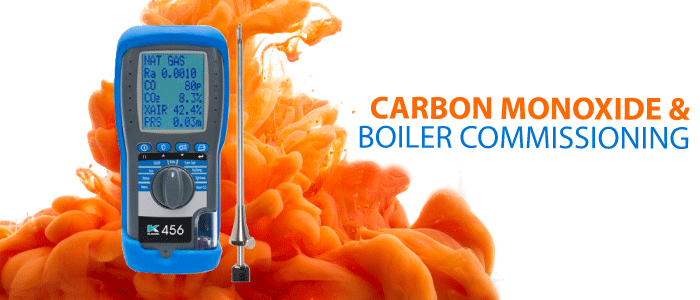
Introduced in April 2013, Technical Bulletin 143 from the Heating and Hotwater Industry Council (HHIC) outlines a safer procedure for commissioning condensing boilers without air/gas ratio valves. Following a small number of carbon monoxide poisoning incidents involving newly commissioned units, the HHIC, boiler manufacturers and other industry bodies have worked together to produce a new testing procedure that is clear, safe and comprehensive.
The main changes involve a requirement to measure CO level and CO/CO2 combustion ratio and record those figures when they comply to the bulletin’s recommended levels. It is important to note, however, that manufacturers may impose more stringent safety limits and that manufacturers’ guidelines take precedence. All modern flue gas analysers now have the measuring capability to comply with TB143 so professionals can stay up to date with the latest advice.
The Commissioning Procedure
As always, a series of pre-testing checks are recommended by TB143 including a visual check of the integrity of the boiler’s fixtures and fittings, especially important when the installation has been carried out by someone else. It is also recommended to check flue lengths against the manufacturer’s maximum limits and the installer’s flue gas analyser must be zeroed in fresh air before starting the commissioning process.
The first step of the procedure is to turn the boiler on to maximum and check the flue integrity where possible before starting the CO and combustion checks. Readings must be stable before being recorded by using a flue gas analyser and probe at the boiler’s flue sampling point. The installer must then simply repeat the process with the boiler set to minimum. The unit can be commissioned as long as CO is less than or equal to 350ppm and combustion ratio is less than 0.0040 (or less depending on manufacturers’ specifications).
When CO and CO/CO2 ratio rise above safe levels, TB143 recommends a series of potential corrections, such as checking the assembly of flue components and checking all seals are in place, but the installer must be prepared to call the manufacturer’s technical helpline if problems cannot be resolved. Boilers with unidentified/unresolved faults must be disconnected from the gas supply so they cannot be used. Otherwise, the installer may commission the boiler.
Recording CO and CO/CO2 Ratio
The HHIC’s collaboration with boiler manufacturers means that correctly recorded CO level and combustion ratio are now essential to boiler warranty. All boiler manuals since 2014 have contained an HHC Benchmark Checklist with space to record CO and combustion ratio level and this must be completed as part of the commissioning process, otherwise manufacturer’s warranty will be voided.
Auto-testing with the Kane 458
The Kane 458 has an auto-test function which performs commissioning tests to TB143 standard. These include CO and combustion ratio measurement in addition to checking flow and return temperatures. Several other flue gas analysis functions are possible with the analyser including tightness/let by, ambient carbon monoxide, pressure/temperature, and combustion tests.
Technical Bulletin 143 is essential reading for today’s HVAC professional and has helped reduce the number of CO-related incidents involving newly commissioned condensing boilers since 2014 through its focus on carbon monoxide and combustion ratio. The useful flowchart layout of the procedure makes it easy to follow, in particular with the Kane 458 which accurately carries out commissioning tests through a handy auto-test function.
Technical Bulletin 143 - Official Publication (Log-in Required)
